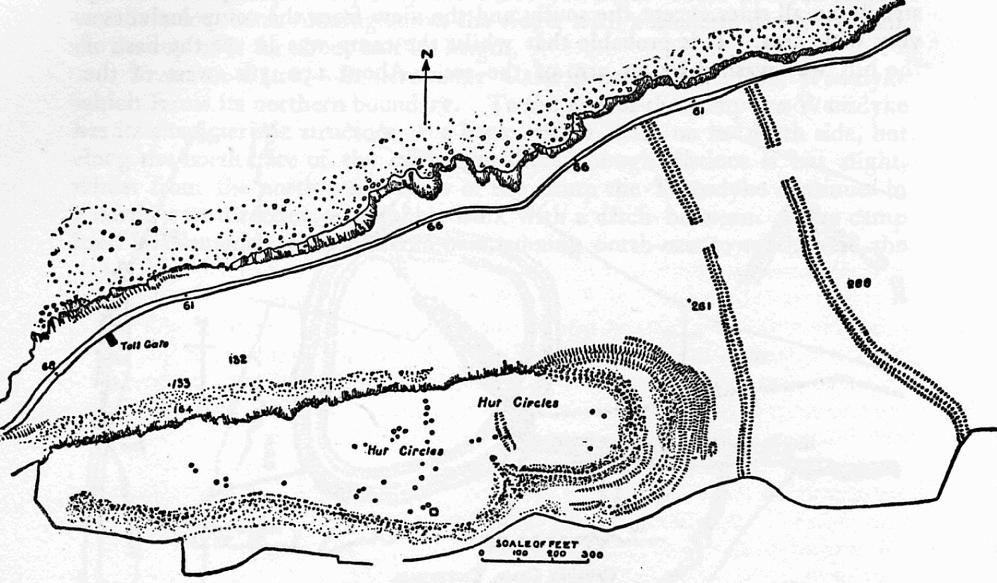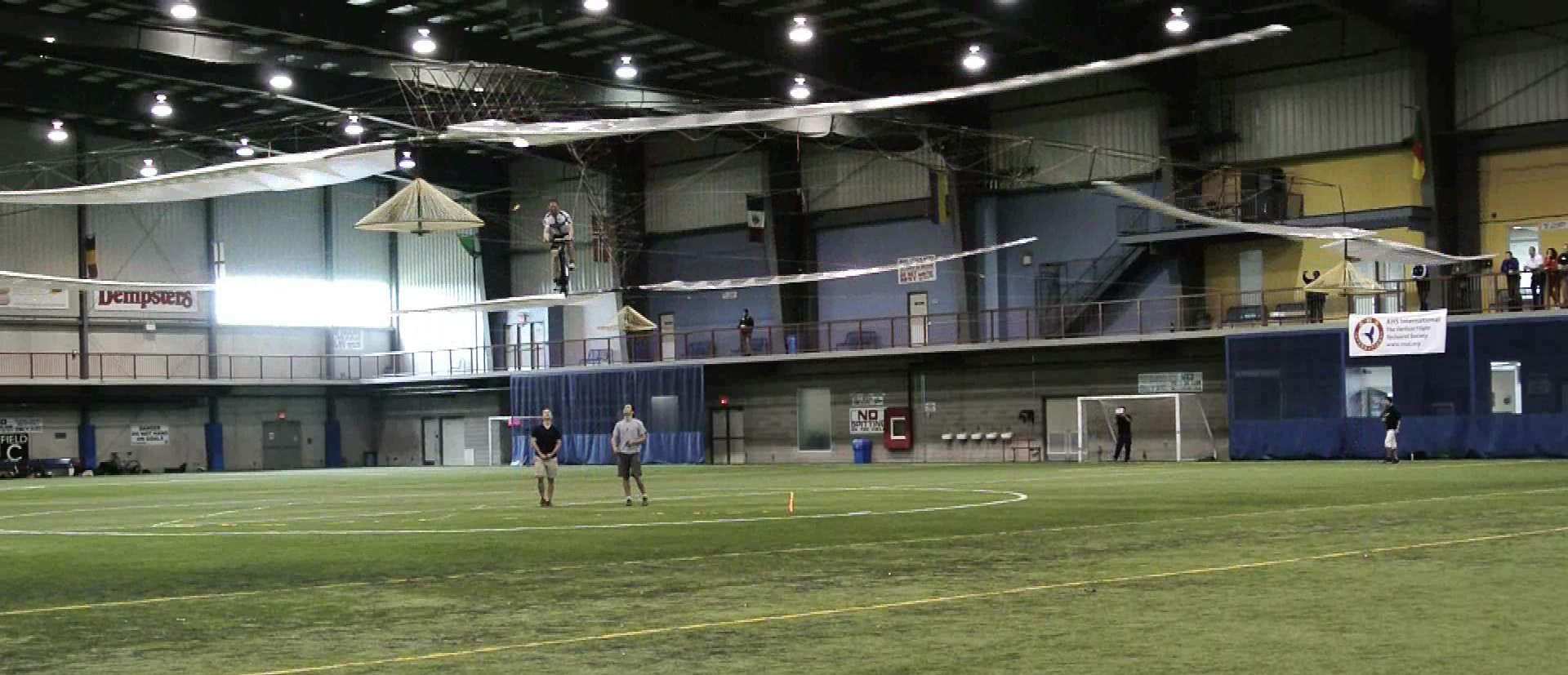|
Cranfield Vertigo
The ''Vertigo'' was a human-powered helicopter designed and built in the 1980s by Andrew Cranfield, an engineer with Westland Helicopters. Development In 1980, Cranfield was a graduate apprentice with Westland Helicopters, when he was prompted by the American Helicopter Society offering the Sikorsky Prize for human-powered helicopters, to develop a design for that competition. The design Cranfield developed was a coaxial helicopter comprising two identical two-bladed rotors, each having a diameter of and blades with a constant chord. The lower rotor was set at 6° dihedral, and the higher rotor at 9° dihedral. In order to take advantage offered by ground effect, the rotors were set as low to the ground, and as closely together, as could be practically achieved, with the fuselage and pilot being located above the rotor assembly. The rotors were constructed of carbon fibre, styrofoam and Mylar. The blades were fixed, with the pitch and coning built into their design. Fli ... [...More Info...] [...Related Items...] OR: [Wikipedia] [Google] [Baidu] |
Human-powered Helicopter
A human-powered helicopter (HPH) is a helicopter powered solely by one or more humans carried on board. As in other human-powered aircraft, the power is usually generated by pedalling. It remains a considerable engineering challenge to obtain both the power-to-weight ratio and rotor efficiency required to sustain a helicopter in flight. On 13 June 2013, the AeroVelo Atlas was the first to complete a flight that lasted 64 seconds and reached an altitude of 3.3 meters or 10.82 feet, thus winning the American Helicopter Society (AHS) International's Igor I. Sikorsky Human Powered Helicopter Competition. The AHS Sikorsky Prize The American Helicopter Society (AHS) International's Igor I. Sikorsky Human Powered Helicopter Competition was a competition to achieve the first human-powered helicopter flight to reach an altitude of 3 m (10 ft) during a flight lasting at least 60 seconds, while remaining within a 10 m (32.8 ft) x 10 m (32.8 ft) square, ... [...More Info...] [...Related Items...] OR: [Wikipedia] [Google] [Baidu] |
Weston-super-Mare
Weston-super-Mare ( ) is a seaside town and civil parish in the North Somerset unitary district, in the county of Somerset, England. It lies by the Bristol Channel south-west of Bristol between Worlebury Hill and Bleadon Hill. Its population at the 2021 census was 82,418. The area around the town has been occupied since the Iron Age. It was still a small village until the 19th century when it developed as a seaside resort. A Weston-super-Mare railway station, railway station and two piers were built. In the second half of the 20th century it was connected to the M5 motorway but the number of people holidaying in the town declined and some local industries closed, although the number of day visitors has risen. Attractions include the Grand Pier, Weston-super-Mare, Grand Pier, Weston Museum and The Helicopter Museum. Cultural venues include The Playhouse, Weston-super-Mare, The Playhouse, the Winter Gardens Pavilion, Weston-super-Mare, Winter Gardens and the The Blakehay Theat ... [...More Info...] [...Related Items...] OR: [Wikipedia] [Google] [Baidu] |
1980s British Experimental Aircraft
__NOTOC__ Year 198 (CXCVIII) was a common year starting on Sunday of the Julian calendar. At the time, it was known as the Year of the Consulship of Sergius and Gallus (or, less frequently, year 951 ''Ab urbe condita''). The denomination 198 for this year has been used since the early medieval period, when the Anno Domini calendar era became the prevalent method in Europe for naming years. Events By place Roman Empire *January 28 **Publius Septimius Geta, son of Septimius Severus, receives the title of Caesar. **Caracalla, son of Septimius Severus, is given the title of Augustus. China *Winter – Battle of Xiapi: The allied armies led by Cao Cao and Liu Bei defeat Lü Bu; afterward Cao Cao has him executed. By topic Religion * Marcus I succeeds Olympianus as Patriarch of Constantinople (until 211). Births * Lu Kai, Chinese official and general (d. 269) * Quan Cong, Chinese general and advisor (d. 249) Deaths * Li Jue, Chinese warlord and regent * ... [...More Info...] [...Related Items...] OR: [Wikipedia] [Google] [Baidu] |
Coaxial Rotor Helicopters
In geometry, coaxial means that several three-dimensional linear or planar forms share a common axis. The two-dimensional analog is ''concentric''. Common examples: A coaxial cable has a wire conductor in the centre (D), a circumferential outer conductor (B), and an insulating medium called the dielectric (C) separating these two conductors. The outer conductor is usually sheathed in a protective PVC outer jacket (A). All these have a common axis. The dimension and material of the conductors and insulation determine the cable's characteristic impedance and attenuation at various frequencies. Coaxial rotors are a three-dimensional planar structure: a pair of helicopter rotors (wings) mounted one above the other on concentric shafts, with the same axis of rotation (but turning in opposite directions). In loudspeaker design, coaxial speakers are a loudspeaker system in which the individual drivers are mounted close to one another on the same axis, and thus radiate sound along th ... [...More Info...] [...Related Items...] OR: [Wikipedia] [Google] [Baidu] |
List Of Human-powered Aircraft
This is a list of History of human-powered aircraft, human-powered aircraft by date. See also *History of human-powered aircraft References Further reading * External links Chris Roper's online book ''Human Powered Flying''Prop designer Vélair – Yuri human-powered helicopter – YouTube video – human-powered ornithopter [...More Info...] [...Related Items...] OR: [Wikipedia] [Google] [Baidu] |
AeroVelo Atlas
The AeroVelo Atlas is a human-powered helicopter (HPH) that was built for AHS International's Igor I. Sikorsky Human Powered Helicopter Competition. On 13 June 2013, it became the first aircraft to achieve the goals of the competition and thus won the prize. Design and development AeroVelo, a team of students and graduates of the University of Toronto, began flight testing its Atlas quad rotor HPH on 28 August 2012. The core team of AeroVelo is the same group that created Snowbird, the first successful human-powered ornithopter. The Atlas is the largest HPH ever flown, and has a tip-to-tip rotor span of , second only to the Russian Mil V-12. The peak power of was generated only during the first few seconds to climb to the required altitude. By the end of the flight, power had reduced to . Todd Reichert, the pilot and a racing cyclist, had specifically trained for such a power profile. The design specifically took advantage of the ground effect possible by the altitu ... [...More Info...] [...Related Items...] OR: [Wikipedia] [Google] [Baidu] |
California Polytechnic State University
California Polytechnic State University, San Luis Obispo (Cal Poly San Luis Obispo or Cal Poly) is a public university in San Luis Obispo County, California, United States, - Cites the location of the university and shows that the university is outside of the San Luis Obispo city limits. Even though the postal address says "San Luis Obispo, CA", it is not in the city limitsThe City of Houston stated "The U.S. Postal Service establishes ZIP codes and mailing addresses in order to maximize the efficiency of their system, not to recognize jurisdictional boundaries." outside of the city limits of San Luis Obispo. Founded in 1901, it is the oldest of Cal Poly (other), three polytechnic universities within the California State University system. Cal Poly emphasizes a "learn by doing" philosophy, integrating hands-on, practical experiences into its curriculum. As of fall 2022, Cal Poly had approximately 21,000 undergraduate and 800 graduate students. Cal Poly is well-regard ... [...More Info...] [...Related Items...] OR: [Wikipedia] [Google] [Baidu] |
University Of Maryland Gamera II
The University of Maryland Gamera II is an improved human-powered helicopter designed to win the US$250,000 Sikorsky Prize. Development The Gamera II is a quadrotor helicopter purpose-designed to attempt an official flight duration record sanctioned by the National Aeronautic Association, and is a step in the progression of designs built to meet the criteria of the 1980 American Helicopter Society Igor I. Sikorsky Human Powered Helicopter Competition. It is the advanced follow-on model of the Gamera I developed the year prior. Two other teams have made Sikorsky Prize attempts unsuccessfully. On June 13, 2013, the University of Toronto Team's AeroVelo Atlas, managed to keep its helicopter in the air for 64.11 seconds, reach a peak altitude of 3.3 meters and drift no more than 9.8 meters from the starting point, claiming the prize. The requirements to win the Sikorsky Prize include achieving a flight duration of 60 seconds and reaching an "altitude" of . At the same time the ai ... [...More Info...] [...Related Items...] OR: [Wikipedia] [Google] [Baidu] |
University Of Maryland Gamera I
The University of Maryland Gamera I is a human-powered helicopter designed to win the $250,000 Sikorsky Prize. Development The Gamera I is purpose-designed quadrotor helicopter to meet the criteria of the 1980 Sikorsky Prize. Two other teams have made prize attempts unsuccessfully, The Da Vinci III, built by a team at the California Polytechnic State University in 1989 and the Yuri I. At the time the world record was of 19.46 seconds of flight at altitude made by the ''Yuri I'' helicopter developed by Nihon University. University of Maryland professor Fred Schmitz proposed an attempt at the prize for the engineering students, with Inderjit Chopra leading the effort. The requirements to win the Sikorsky Prize include achieving a flight duration of 60 seconds and reaching an altitude of . At the same time the aircraft must prove that it is controllable by remaining within a circle. Since the University of Maryland's mascot is a terrapin turtle, the craft is named Gamera, a no ... [...More Info...] [...Related Items...] OR: [Wikipedia] [Google] [Baidu] |
The Helicopter Museum
The Helicopter Museum in Weston-super-Mare, North Somerset, England, is a museum featuring a collection of more than 80 helicopters and autogyros from around the world, both civilian and military. It is based at the southeastern corner of the former Weston-super-Mare RAF Base. History The museum originated in 1958 when its founder, aviation writer and historian Elfan ap Rees, began to build up a private collection of rotorcraft documentation and artefacts. Over the next ten years his collection grew and in 1969 he acquired his first complete helicopter, a Bristol Sycamore Mk.3. In 1974, ap Rees purchased a Bristol Belvedere and formed a volunteer group to restore it. In December 1976, an ex Royal Navy Westland Whirlwind HAS Mk.7 was acquired and added to the collection. In 1977 and 1978, more aircraft were added, including an ex Royal Air Force Bristol Sycamore HC Mk.14 and several rare prototypes: the Fairey Ultra-Light tip-jet driven helicopter, the Thruxton Gadfly HDW.1 ... [...More Info...] [...Related Items...] OR: [Wikipedia] [Google] [Baidu] |
Human-powered Helicopter
A human-powered helicopter (HPH) is a helicopter powered solely by one or more humans carried on board. As in other human-powered aircraft, the power is usually generated by pedalling. It remains a considerable engineering challenge to obtain both the power-to-weight ratio and rotor efficiency required to sustain a helicopter in flight. On 13 June 2013, the AeroVelo Atlas was the first to complete a flight that lasted 64 seconds and reached an altitude of 3.3 meters or 10.82 feet, thus winning the American Helicopter Society (AHS) International's Igor I. Sikorsky Human Powered Helicopter Competition. The AHS Sikorsky Prize The American Helicopter Society (AHS) International's Igor I. Sikorsky Human Powered Helicopter Competition was a competition to achieve the first human-powered helicopter flight to reach an altitude of 3 m (10 ft) during a flight lasting at least 60 seconds, while remaining within a 10 m (32.8 ft) x 10 m (32.8 ft) square, ... [...More Info...] [...Related Items...] OR: [Wikipedia] [Google] [Baidu] |





